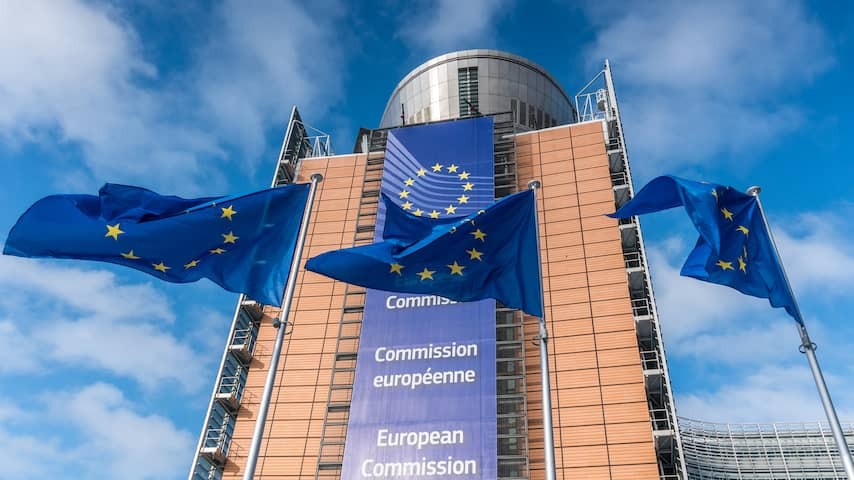
Many mistakes were made in the European Union’s expenditure last year. This is reported by the European Court of Auditors, which has examined EU expenditure. The auditors estimate that last year something went wrong with 3.6 percent of the 247 billion euros in expenditure.
Although this is lower than the 5.6 percent of a year earlier, it is still higher than the maximum 2 percent that the European Court of Auditors would like to see. Year after year the error rate is too high. This year too, the Brussels inspectors call the situation “worrisome”.
Things often go wrong with subsidies for which recipients have to submit declarations. They must be able to prove that they have incurred certain costs and meet the conditions set. But that doesn’t always work.
The audit office adds that there is not always malicious intent. Subsidy recipients also make mistakes because they have to comply with complicated regulations and many different requirements.
The inspectors also saw that things went wrong with corona vaccines, which the European Commission purchased on behalf of member states. Information about the purchase agreement was sometimes missing, for example about the price and quantities. Furthermore, procurement rules are not always properly followed.
House with swimming pool in Greece
Although it is not always a matter of fraud, in some cases it looks very much like it. For example, an entrepreneur in Greece built a spacious house with a swimming pool last year with European subsidies.
Things did not always go well in the Netherlands either. For example, European money was used for occupational health and safety training, but the recipient of the subsidy was unable to show any supporting documents. Fraud cases are forwarded by the audit office to the European fraud detection service Olaf.
In addition to subsidies, the audit office also looked at payments from the corona recovery fund. This fund was created during the pandemic to help EU countries recover from the corona blow. Countries that want to receive money from that fund must meet goals in the areas of, among other things, the rule of law and the environment.
Of the almost four hundred targets that were examined, twelve cases turned out to be inadequate. An example of this was in Poland, where “serious shortcomings” were found in the appointment of a judge. This country is under a magnifying glass because the free judiciary has come under pressure in the past.
‘Still too many irregularities’
“While the reduction in the error rate is a step forward, EU spending still contains too many irregularities,” said Tony Murphy, Ireland’s President of the European Court of Auditors.
The audit body therefore gives an “adverse opinion” on the EU expenditure for 2024. There are no further consequences. For example, the audit office cannot issue a fine.
Murphy does hope that policymakers will learn from the findings, especially now that a new multi-year budget is being negotiated in Europe, which should be much higher than the current budget.
Many mistakes were made in the European Union’s expenses last year. This is reported by the European Court of Auditors, which reviews the EU’s expenses. The auditors estimate that things went wrong last year with 3.6 percent of the 247 billion euros in expenses.
Although that is lower than the 5.6 percent a year earlier, it is still higher than the maximum 2 percent that the European Court of Auditors would like to see. Year after year, the error rate is too high. This year, the Brussels auditors are also calling the situation “worrying.”
Things often go wrong with subsidies where recipients have to submit declarations. They must be able to prove that they have incurred certain costs and meet the set conditions. But that is not always successful.
The Court of Auditors adds that it is not always a matter of malicious intent. For example, subsidy recipients also make mistakes because they have to comply with complex regulations and many different requirements.
Furthermore, the auditors saw that things went wrong with corona vaccines, which the European Commission purchased on behalf of member states. Sometimes information about the purchase agreement was missing, for example about the price and quantities. Furthermore, procurement rules were not always followed properly.
House with swimming pool in Greece
Although it is not always a matter of fraud, in some cases it seems very much like it. For example, an entrepreneur in Greece built a spacious house with a swimming pool last year with European subsidies.
Things did not always go well in the Netherlands either. For example, European money was used for occupational health and safety training, but the recipient of the subsidy could not show any supporting documents. Fraud cases are passed on by the Court of Auditors to the European anti-fraud office Olaf.
In addition to subsidies, the Court of Auditors also looked at payments from the corona recovery fund. That fund was created during the pandemic to allow EU countries to recover from the corona blow. Countries that want to receive money from that fund must meet targets in the areas of the rule of law and the environment, among other things.
In the almost four hundred goals that were examined, twelve cases were found to be not in order. An example of this was in Poland, where “serious shortcomings” were found in the appointment of a judge. This country is under scrutiny because the independent judiciary has come under pressure in the past.
‘Still too many irregularities’
“Although the decrease in the error rate is a step forward, EU spending still contains too many irregularities,” says Tony Murphy, the Irish president of the European Court of Auditors.
The audit body therefore gives an “unfavorable opinion” on EU spending for 2024. There are no further consequences. For example, the Court of Auditors cannot impose a fine.
However, Murphy hopes that policymakers will learn from the findings, especially now that Europe is negotiating a new multiannual budget, which should be much higher than the current budget.